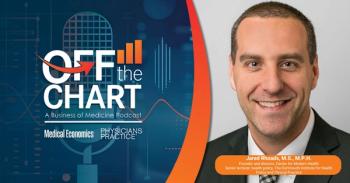
New study links congenital lung variations to COPD
Long-thought to be primarily caused by smoking and other exposures, scientists now believe that congenital changes to lung tissues with a genetic link may also be to blame.
Lifestyle choices such as cigarette smoking have long been thought to be the primary cause of chronic obstructive pulmonary disease (COPD), but a new study indicates that genetics may also play a role.
The study was conducted to answer the question of why some smokers don’t develop COPD while many non-smokers do, and to fully understand the pathogenesis of this disease, which affects more than 16 million Americans.
COPD is a progressive lung disease that encompasses both emphysema and chronic bronchitis. It is the fourth leading cause of death in the U.S., but has never been fully understood. The belief has been that COPD develops in later years after a lifetime of exposure to cigarette smoke or other harmful chemicals. But prevalence among non-smokers and recent studies that have shown poor lung function in younger individuals led this research team to find that nearly a quarter of adults have physical lung variations that may increase their risk of developing COPD.
The
The research team went on to study the CT scans of 3,000 adults aged 60 to 78, about half of which were current or former smokers. They found that 6% were missing a branch of the airway tree in the lower section, 16% had an extra branch, and 4% had some other deviation from the standard pattern.
In a secondary analysis, the team looked at the CT scans of an additional 1,800 individuals with COPD against 900 healthy adults. They found that COPD was more likely to occur in individuals with an extra branch, as well as in smokers with a missing lower airway branch. Researchers also examined the scans of the study group in comparison with those of their siblings and found familial similarities, suggesting a genetic link.
Lead researcher Benjamin Smith, MD, MSc, of Columbia University and McGill University Health Centre said the study results shed new light on what has been known about the development of COPD.
“The classical thinking about COPD pathogenesis was that heavy smoking over many years caused lung function to decline resulting in COPD later in life. This is definitely true for many people with COPD, and quitting smoking remains the best thing for your health,” Smith said. “But more recent studies suggest that some people with COPD later in life actually had low lung function early in life. Our study shows that variations in airway tree structure, which are believed to form in utero, are associated with higher odds of COPD later in life.”
These variations are easy to detect on a CT scan and tend to cluster in families, Smith said. There are no gene-based strategies for treatment or early intervention yet, he said, as this is the first discovery to link gene-to-airway branch variation to COPD.
“We're currently investigating how this gene and others may contribute to airway diseases, and hope to identify pathways that can be targeted therapeutically,” Smith said. “Low-dose CT scans are being performed in large numbers of heavy smokers to screen for lung cancer. We're currently investigating whether airway branch variation, which is easily detected with CT, can predict future risk of COPD. If confirmed, targeting smokers who undergo low-dose CT screening who exhibit high-risk airway branching for smoking cessation and testing for COPD might be helpful.”
Newsletter
Stay informed and empowered with Medical Economics enewsletter, delivering expert insights, financial strategies, practice management tips and technology trends — tailored for today’s physicians.














